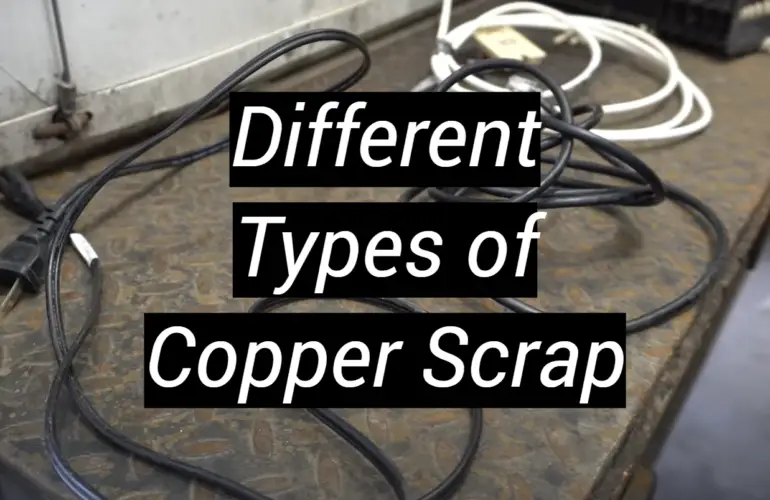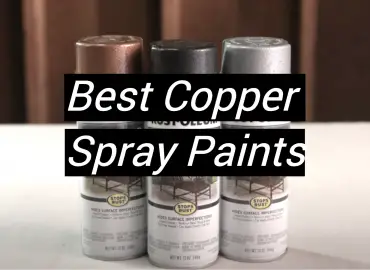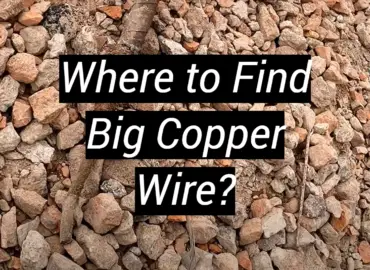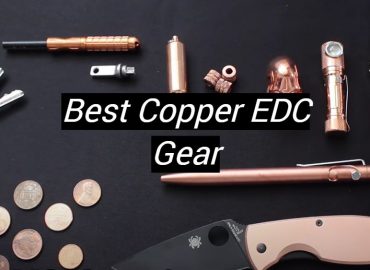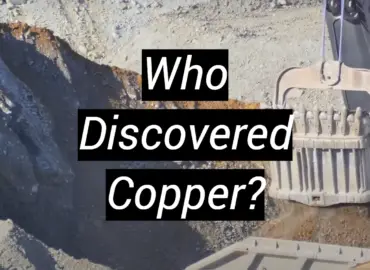Copper is a popular metal with many different uses, and it can be recycled to create new items. There are several types of copper scrap that can be collected and recycled to create new products. From wire to tubing, from sheets to shavings, these various forms of copper scrap provide an excellent way for individuals or businesses to reduce their environmental impact while also making extra money. Explore the different types of copper scrap and how they can be recycled safely and responsibly.
What is Copper?
Copper is a soft and malleable metal that has been used since ancient times.

It is prized for its electrical conductivity, strength, ductility, and resistance to corrosion.
It’s commonly used in products such as [1]:- Wiring;
- Plumbing fixtures;
- Household appliances;
- Electronics components;
- Jewelry;
- Coins, etc.
As a result of its widespread use and abundance of supply sources, copper scrap is an important resource for those looking to recycle it responsibly. By recycling copper, you can reduce your carbon footprint while also creating new products with previously used materials. This makes recycling copper both economically viable and environmentally responsible.
What is Scrap Copper?
Scrap copper is any item or material composed of at least 95% copper that is no longer usable in its original form. It includes items such as wires, cables, pipes, sheet metal, offcuts from manufacturing processes, etc. Copper scrap can come in a variety of shapes and sizes and often contains other metals such as lead due to the recycling process.
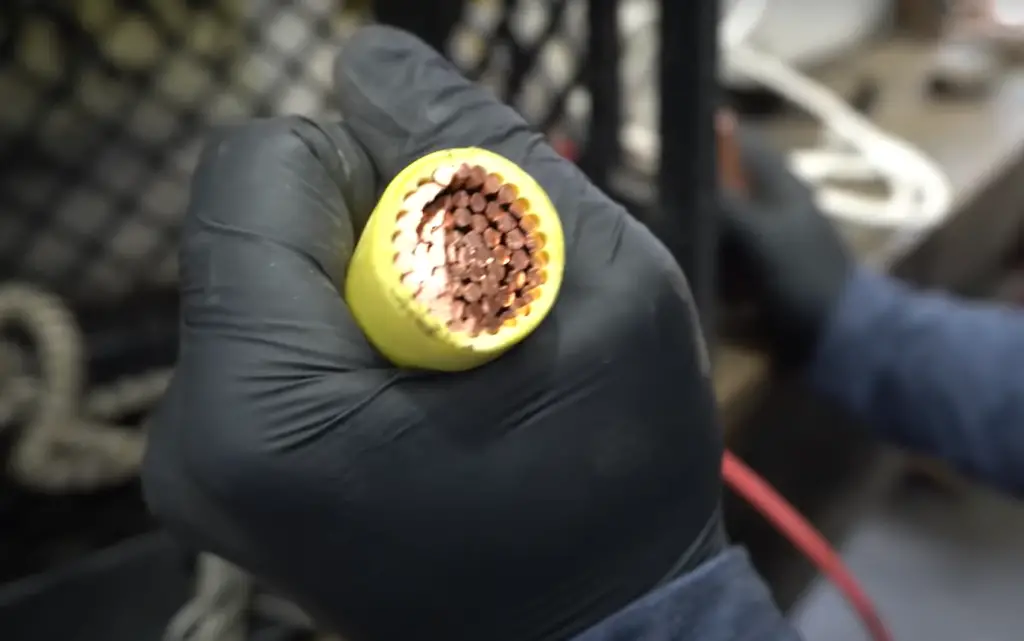
By breaking down these materials into smaller components one can save energy and resources by reusing them instead of creating new products from raw material sources.
Different Types of Scrap Copper
By having a good understanding of the different types of scrap copper available, individuals and businesses can identify which components they need to recycle and how best to process them for reuse. Here are the most common types:
Bare Bright Copper
Bare bright copper is the purest form of copper scrap and can be identified by its bright, shiny appearance. It usually comes in the form of thin wires or cables that have been stripped of insulation and other non-metallic materials. Bare bright copper generally contains no other metals such as lead, which makes it an ideal choice for those looking to recycle their scrap copper efficiently.
Copper Pipe
Copper pipe is a type of scrap copper that has been cut into smaller pieces, usually to fit certain specifications. It often comes from plumbing systems, electrical wiring projects, and more. Copper pipe is identifiable due to its reddish hue and can be recycled just like bare bright copper if it meets the necessary purity requirements.
Copper
Copper is a type of scrap copper that has been stripped of non-metallic elements such as paint, plastic, and insulation. It is then separated into two categories depending on yield quality – either bright or dark. Bright copper is shiny and contains no other metals; whereas dark copper may contain some lead or other impurities.
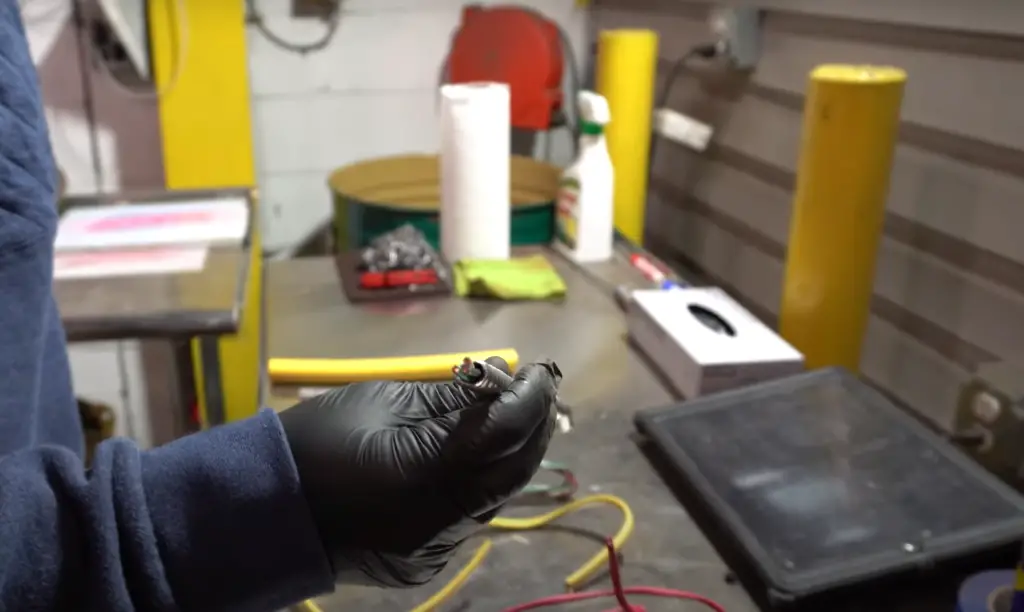
This type of copper scrap is the most valuable as it requires less processing than other forms and can be turned back into its original form with relative ease. It can usually be identified by its wire form and reddish hue which makes it one of the top choices for recycling companies looking to get the most value from their scrap metal. Once processed, this type of scrap can be used to create new products.
Copper
Copper is a type of scrap copper that is usually found in the form of sheets, tubing, or castings. This type of copper has been processed to remove non-metallic elements such as paint and insulation but may still contain some lead or other impurities. It is not as valuable as bare bright copper or #1 copper due to its lower purity levels and the need for further processing before it can be reused.
Once identified and cleaned, this type of copper can be melted down and used to create new products such as wiring and plumbing fixtures.Light Copper (AKA grade #3 copper)
It is a type of copper which is usually used in plumbing applications. This copper is softer and more malleable than its counterparts allowing it to be handled during the installation process. Light Copper is also very resistant to corrosion, making it ideal for underwater or damp environments.
Its light color helps it blend into many home designs, while still providing an attractive look. Light copper can often be recycled which makes this material environmentally friendly as well. For these reasons, it is becoming increasingly popular as a choice among homeowners looking for piping materials that will last a long time and are easy to install.
Insulated Wire
Insulated wire is a type of wiring material that consists of a conductive metal core or cable surrounded by protective insulation. This insulation can be made from many different materials, such as plastic, rubber, PVC, and fiberglass. Insulated wires are used for a variety of electrical purposes in both residential and commercial applications.
They are designed to protect against electric shock, prevent sparks from arcing between the wire and surrounding objects, provide insulation to keep heat away from sensitive components and reduce electromagnetic interference. In addition to offering safety benefits, insulated wires help maximize signal transfer efficiency by minimizing resistance along the length of the wire. This copper type comes in various sizes for different uses and can be bought pre-insulated or you can purchase separate insulating materials to be applied around the wire.
Insulated Wire
Insulated wire is an extremely versatile form of scrap copper that is used in a variety of applications, from electrical wiring to plumbing. It consists of a conductive metal core or cable that has been surrounded by protective insulation. The insulation can be made from many different materials including rubber, plastic, PVC and fiberglass. This type of copper conducts electricity efficiently and protects against electric shock and sparks arcing between the wire and external objects.
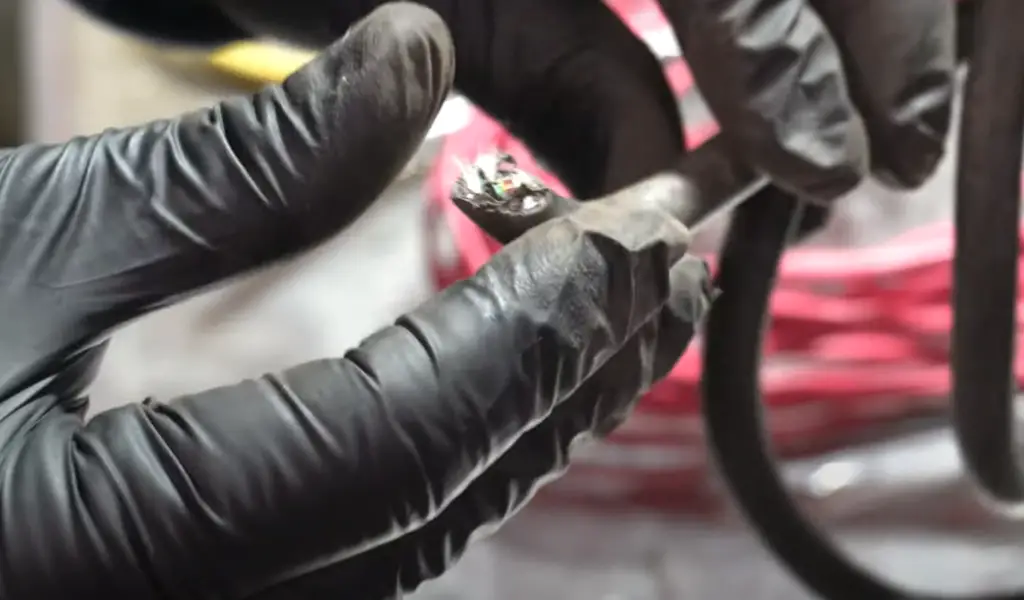
Insulated wires also reduce electromagnetic interference and maximize signal transfer efficiency due to their reduced resistance along the length of the wire. Insulated wires come in various sizes for different uses and can be bought pre-insulated or separately with insulating materials applied around the wire. These attractive features make insulated wire an excellent choice for many residential and commercial applications.
Why Recycle Copper?
Recycling copper is beneficial for many reasons:
- Copper recycling helps reduce pollution from mining and processing new copper materials as fewer resources are used to extract the metal;
- Recycling copper helps conserve energy by reducing the amount of energy required to process new copper materials;
Old or scrap copper can be recycled and reused, meaning less waste ends up in landfills, saving space and helping protect our environment; - Recycling old copper reduces the need for more destructive extraction methods including open-pit mining which can cause environmental damage and displacement of native species’ habitats;
- By reusing existing metals, we prevent further depletion of finite natural resources such as copper ore deposits worldwide, promoting a sustainable economy that relies on renewable resources;
- Recycling copper can be more cost-efficient than mining for new copper since the process of recycling requires fewer steps and less energy expenditure;
- Copper recyclables can be melted down quickly and easily, allowing them to be used in a variety of products such as pipes, electrical wire, coins, jewelry, etc.;
- The recycling process also produces fewer dust particles compared to traditional smelting methods, making it safer for workers who are exposed to these pollutants daily;
- Recycled copper helps reduce carbon emissions since it requires less energy to produce than when using raw materials from the earth’s surface;
- Copper recycling keeps the metal out of landfills and in circulation, preserving its end-of-life value.
What is the best copper to scrap?
The best copper to scrap depends on the type of application it will be used for. Generally, heavier and thicker grades of copper are ideal for projects that require a high level of strength or durability while lighter grades may be better suited for projects where flexibility is needed. The grade of copper can also affect its price and desirability in scrap yards.

Grade 1 or pure copper has the highest value, followed by grade 2 (AKA light copper) and then grade 3 (AKA heavy copper). To determine the grade of metal when scrapping, look at the color and thickness to start.
When scrapping copper, you should keep in mind that some scrap yards prefer copper with outdated insulation, such as PVC or rubber, still attached whereas others may require the insulation to be removed before selling. It is always a good idea to research the grades and prices of different types of copper before heading out to sell your scrap metal.
Where to Find Different Types of Copper Scrap
It pays to think outside the box when searching for scrap copper – many seemingly unlikely sources can be surprisingly helpful. By looking in the right places, you can find different types of scrap copper for recycling and reuse. Here are some of the best places to find scrap copper for money:
Construction Sites
Construction sites often produce large amounts of scrap copper when renovating old buildings or creating new structures.
Electricians and Plumbers
Professionals who work with electricity and plumbing are a great source of copper scrap due to their access to these materials in the course of their jobs.
Electronics Stores
Most electronics stores have some form of copper in many of the products they sell, making them another good place to look for scrap copper.
Home Appliance and Furniture Repair Shops
These shops may have leftover pieces from furniture or appliances that can be salvaged as scrap metal, including copper.
Salvage Yards
Many salvage yards will accept various types of scrap copper from people looking to get rid of their old materials.
Auto Repair Shops
Auto repair shops often have a lot of scrap copper from cars and other vehicles they work on, making them an ideal place to find copper pieces.
Homeowners
Most homeowners likely have some form of scrap copper in their homes, such as wiring or plumbing fixtures that they are no longer using.
Computer Repair Companies
Many computer repair companies have access to a variety of scrap copper from inside the computers they fix.
Demolition Companies
Demolition companies often come across large amounts of scrap metal when tearing down buildings or structures, including copper wires and pipes.
Solar Panel Installers
Solar panel installers may have leftover scrap copper from installing these panels on a customer’s property.
Products that Contain Copper Scrap
Scrap copper is a valuable material that can be recycled, reused, and repurposed for many applications. Here are the most common places to check to find different types of scrap copper for sale:
- Electrical wiring. Copper is the most widely used electrical conductor, with an estimated 80% of all copper used in electrical applications [2];
- Plumbing pipes. Copper is one of the most popular metals for residential plumbing due to its longevity and low cost compared to other materials;
- Microwave ovens. Copper can be found in the wiring and components of microwaves as it conducts heat well and is resistant to corrosion;
- Refrigerators. Copper wires are often used inside refrigerators for their superior conductivity and resistance to temperature changes;
- Radiators. Radiators contain a large amount of copper due to its ability to withstand high temperatures without corroding or breaking;
- Computer components. Copper wires are used in computer cases, motherboards, graphic cards, and other components due to their lower resistance and superior conductivity;
- Mobile phones. Copper wiring can be found inside mobile phones as it helps with signal transmission between the phone and its base station or network tower;
- Air conditioners. Air conditioners require copper for their heat pumps, condenser coils, evaporator coils, and other parts of the system that require thermal and electrical conduction;
- Washing machines. Modern washing machines often contain copper tubing to connect various parts such as valves, tubs, and pumps together efficiently;
- Solar panels. Solar panels rely on copper for collecting energy from the sun and transferring it to a battery or electrical system;
- Car parts. Copper is used in many car parts such as spark plugs, radiators, wiring, alternators, brakes, and fuel pumps due to its superior conductivity and heat resistance;
- Transformers. As one of the core components of transformers, copper wires are used to help reduce electricity losses while also improving signal transmission;
- Machinery. Copper wiring is often used in industrial machinery due to its high level of efficiency and durability over other materials such as aluminum or steel;
- TVs. Copper wires can be found inside televisions for their ability to transmit signals with minimal interference or loss of quality;
- Motors. Copper is often used in motors due to its superior conductive properties and because it can withstand the heat generated by a running motor.
Tips for Selling Copper Scrap
To maximize the amount of money you get for your copper scrap and ensure the transaction goes smoothly. Here are some tips to help you:
Research Prices
You should research the current market prices for copper scrap before selling it so you know how much you should be getting paid.
Sort Your Copper Scrap
Separate your copper scrap into different grades and types before selling it, as it will help you get a better price.
Know Your Metals
Take note of the type of metal that makes up your scrap, as some metals are worth more than others and can yield higher returns.
Ask About Insulation
Different scrap yards have their requirements when it comes to insulation, so make sure to ask about this beforehand if applicable.
Clean the Metal
Wipe down and clean your copper scrap before taking it to the scrap yard, as this can help you get a higher price.
Compare Prices
Shop around to compare prices between different scrap yards to get the best deal possible for your copper scrap.
Maintain Records
Keep detailed records of all transactions when selling your copper scrap, including receipts, invoices, and payment documents.
Use a Magnet
Test out metals you think may be copper with a magnet as non-ferrous metals such as aluminum or brass will not be attracted by the magnet.
Ask About Other Metals
Some yards accept other metals in addition to copper, so make sure to ask about that before selling your scrap to them.
Follow Safety Protocols
Make sure to abide by the safety protocols of the scrap yard you are selling copper scrap, as it will ensure a safe transaction for everyone involved.
Determining Copper Purity
By using one or more of these methods, you can determine the purity of your copper scrap before selling it off for maximum profits [3]:
- Visual Check. One of the quickest ways to check for copper purity is by doing a visual inspection of the material. Look for signs of discoloration, tarnish, or other forms of deterioration which could reduce the conductivity and purity of the copper;
- Chemical Test. A chemical test using specific reagents can be conducted to determine if a sample contains any impurities that may have reduced its conductivity or purity;
- X-Ray Fluorescence. X-ray fluorescence (XRF) is an advanced technique used to measure copper concentration in samples with high accuracy and precision. The XRF method is widely accepted in many industries as it does not require destructive sampling and provides highly accurate results within minutes;
- Flux Test. The flux test is a specialized technique used to determine the purity of copper by measuring its electrical conductivity and resistance to corrosion;
- Optical Emission Spectroscopy. This method is capable of quickly determining the chemical composition and concentrations of elements in a sample, including copper concentration;
- Gravimetric Analysis. This method involves weighing the sample and then comparing it to similar samples that have been tested for their purity levels to determine its accuracy and authenticity.
FAQs
What is the difference between #1 and #2 copper scrap?
The main difference between #1 and #2 copper scrap is the amount of impurities they contain. Number 1 copper scrap is purer. It consists of uncoated and unalloyed copper. Number 2 copper scrap includes higher levels of alloys and contaminants such as lead, zinc, or tin. For this reason, number 1 copper fetches a higher price than number 2.
How do you know if it is copper 1 or 2?
One way to tell the difference between copper 1 and 2 is by looking for any signs of corrosion or discoloration.
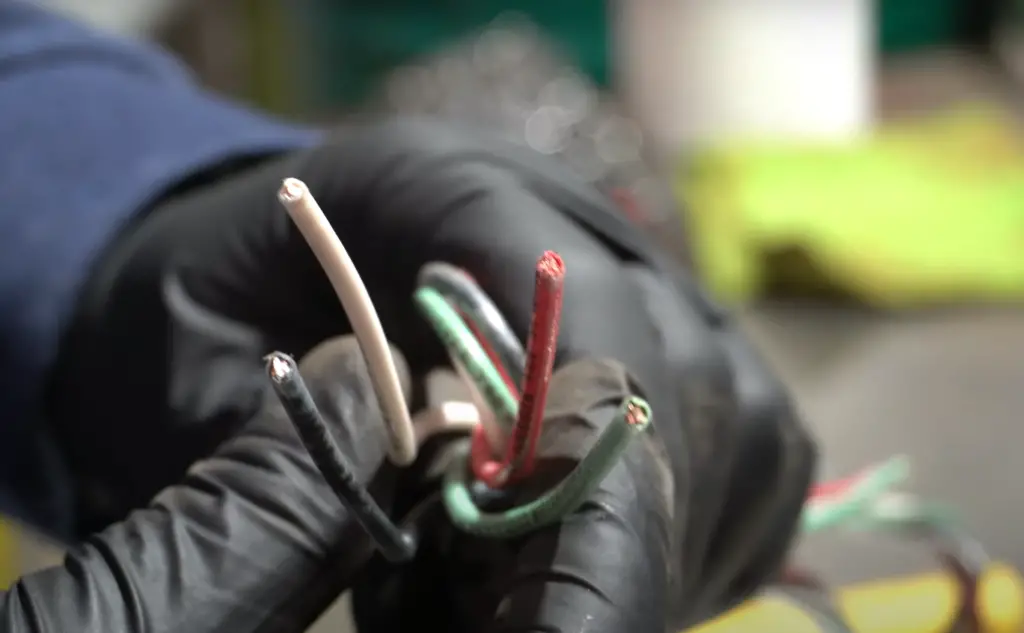
Number 1 copper is usually bare, uncoated, and unalloyed while number 2 has higher levels of impurities. Copper 1 also has a shinier appearance than its counterpart which can be used as a visual indicator [4].
What is the best grade of copper?
The best grade of copper is usually referred to as “stripped copper” which has been stripped of any insulation and is almost pure. This type of copper is the most valuable and sought after by buyers due to its high conductivity levels and low levels of impurities. Stripped copper can also be recycled with ease, making it an attractive option for many scrap yards.
Which copper is more expensive?
Number 1 copper is usually more expensive than number 2, as it has fewer impurities and higher conductivity levels. Number 1 copper is also much easier to recycle which makes it highly desirable for scrap yards. The price of stripped copper is generally the highest out of any other type of copper due to its high purity and recycling potential.
Useful Video: What Are Common Scrap Wire Types?
Conclusion
Selling copper scrap can be a great way to make extra money if you know what you do. By researching prices, sorting your metals, knowing your metals, and cleaning them before taking them to the scrap yard, you can maximize your profits when selling your copper. To ensure you get the best return for your copper scrap, always take note of its purity by using one of the methods discussed in this article. With these tips, you can rest assured that you get the best deal possible for your copper scrap.
References:
- https://www.yourdictionary.com/copper
- https://www.statista.com/statistics/1199942/contained-copper-general-appliances-by-type/
- https://sciencing.com/test-copper-purity-12190071.html
- https://www.differencebetween.com/difference-between-copper-1-and-vs-copper-2/

